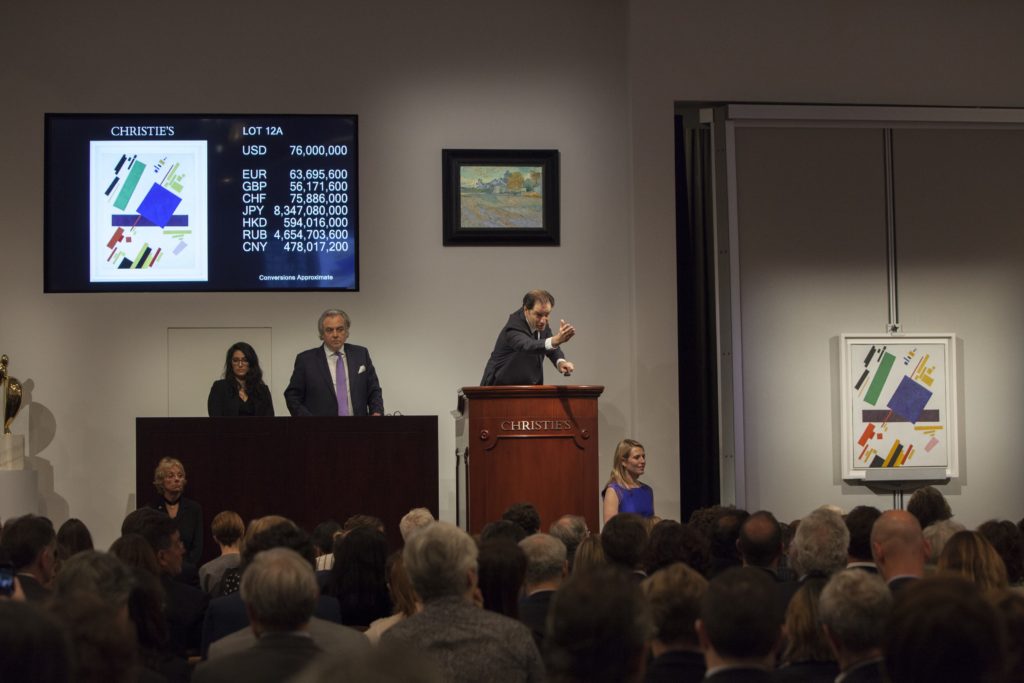Law & Politics
A High-Profile Impressionist Art Collector Says Wildenstein Sold Him a ‘Clever Fake’ Bonnard—and Now the Courts Will Decide
The collector bought the painting from the gallery more than thirty years ago.

The collector bought the painting from the gallery more than thirty years ago.

Eileen Kinsella

The art collector and real-estate investor Neil Wallace, who with his brother Monte are thought to be the sellers of a $100 million Impressionist art collection at Christie’s London in February, is part of a trust suing Wildenstein & Co. over a Pierre Bonnard painting bought more than three decades ago that they now deem “a clever fake.”
The lawsuit, filed in a New York federal court on Tuesday, is being brought by Greenway II Trust, which names Neil Wallace as trustee. The painting was transferred to the trust in 2017 for estate planning purposes, according to the complaint.
The work, Still Life with Basket of Fruit, was said to have been executed around 1930 and was bought for $275,000 in 1985 from Wildenstein, “one of the world’s foremost art galleries, with a well established reputation as an expert in French Impressionist art, and a particular expertise in the work of Bonnard,” according to the complaint.
As is often the case with forgeries, buyers don’t learn of problems with a work until they seek out an insurance appraisal or they try to sell it. In this case, the Wallace brothers—both of whom are in their 80s—sought to consign the work, probably as part of the trove of works at Christie’s‚ much of which “was acquired between the mid-1980s and early ’90s from leading galleries such as Wildenstein and Acquavella,” Bloomberg reported at the time.
But when the trust sent the painting in 2018 to one of the co-authors of the Bonnard catalogue raisonne, Guy-Patrice Dauberville, for authentication, he wrote back advising that the painting was a fake, according to the complaint.
It turned out that the painting “was not listed in the catalogue raisonne in 1985, or ever,” a fact that Wildenstein allegedly didn’t disclose to the buyer. The trust now argues that if Wildenstein had reviewed the catalogue and found that the painting was not included, “its failure to advise the Trust was a material omission that operated as a fraud.” Or, if Wildenstein simply didn’t consult the catalogue before selling the work, then that too “was reckless and defrauded the Trust,” the complaint says.
The attorney for Neil Wallace’s trust declined to comment.
An attorney for Wildenstein, Steven R. Schindler, told artnet News: “This work, which was consigned to Wildenstein for sale by a prominent collector in 1984, has an impeccable provenance, which was well-known at the time. The allegations in the complaint are baseless, and Wildenstein will respond to them in court.”
The case will likely hinge largely on the statute of limitations. The plaintiffs will argue that it starts at the time the fraud was discovered, in 2018, as opposed to when the work was acquired, 34 years ago.
In New York, the statute of limitations for fraud is six years from the time of the fraud, or within two years from the time the fraud was discovered or, with reasonable diligence, could have been discovered.
Greenway is seeking $275,000—the amount paid for the painting—plus expenses and 34 years of interest.
The artnet Price Database lists just fewer than 5,000 auction results for Bonnard. The record at auction is $11.6 million, paid for Terrasse à Vernon, a 1923 oil painting that sold at Christie’s London in February 2011. The second highest auction price is $9 million, paid for Le petit déjeuner, radiateur (1930), which sold at Sotheby’s London in June 2010. To date, 98 Bonnard works have sold for more than $1 million each at auction, according to the database.